Trafalgar Square’s cheering crowds belied a grim reality for the citizens of Great Britain in 1945. The British economy was in ruins, the empire spent, its global influence waning before that of the United States and the Soviet Union. Before the summer of 1945 ended the Churchill government, symbol of British defiance, was out. By the end of the decade Indian independence was a reality, the empire crumbled, the British fleet, by then a luxury the Crown could no longer afford, was dwindling in mothballs. Even the retention of the monarchy was questioned in the Parliament, the pubs, and the press. Then, in the winter of 1952, King George VI, himself a reluctant monarch who had ascended the throne upon the abdication of his brother, died at the age of 56. He had been King for just 15 years.
And thus a tired, despondent, discouraged nation still dealing with wartime shortages and rationing, still facing the rubble left behind by the German blitz, welcomed a new monarch, Elizabeth II. The seven decades of her reign as Queen have been tumultuous. There were the Troubles in Ireland, the decolonization of Africa, the Cold War, the Race to the Moon, the containment of communism, the end of empire. There were political scandals, family scandals, and a Great Britain which shifted on the world’s political stage, allied to the United States and NATO, yet still determined to maintain British interests. Here are ten major events of the reign of Her Majesty Elizabeth II, the longest reigning monarch in the history of Great Britain.
10. The Suez Crisis of 1956
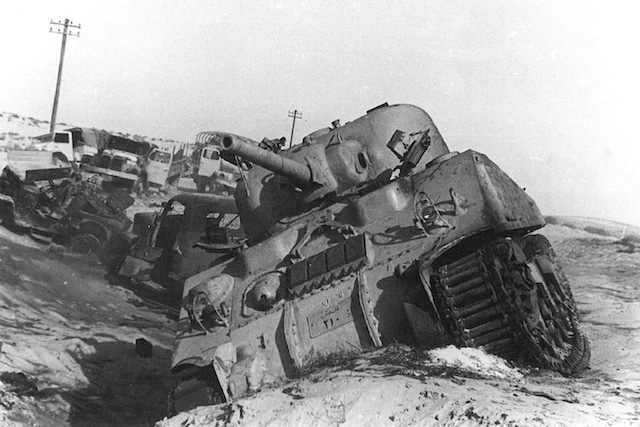
In 1956 Egypt’s Gamel Abdel Nasser nationalized the Suez Canal Company, seizing control of the major waterway. The company, primarily owned by British and French stockholders, controlled the operations of the vital waterway. Complicated intertwined geopolitical and economic goals involving Britain, France, the United States, the Soviet Union, Iraq, Egypt, Israel, Jordan, made the region a powder keg, liberally fueled by the rivers of oil controlled by the region. In 1956 Israel, backed by the French and British, launched a military invasion of Suez to reclaim control of the canal, an action sometimes called the Second Arab-Israeli War. The Soviet Union backed the Egyptians. The United States, fearful of Soviet intervention and actions in Europe, condemned the Franco-British invasion.
The Suez Crisis became a full-fledged military conflict in 1956, involving ground, air, and naval forces on a scale rivaling the Mediterranean theater of World War II. The US used military, diplomatic, and economic pressure to force the UK and France to end their invasion. Aid to Nasser by the Americans and their allies alienated the Israelis. Eventually, pressure forced the downfall of the British government under Prime Minister Anthony Eden. Despite some military successes, Britain and France were forced to withdraw their troops. The negotiated settlement, which like all Mid-eastern agreements laid the groundwork for future crises, humiliated both the British and the French in international circles.
The Suez Crisis, which receives short shrift in most Western histories, was a major turning point in the post-World War II era. It marked the end of Great Britain as an international superpower, and created a rift in the alliance between the English-speaking powers. The following year, in part to assuage US-UK relations, Elizabeth made her first visit to the United States as monarch. One of the sites Her Majesty requested to visit in America was a supermarket, in College Park, Maryland. At the time of her visit Great Britain was still subject to food rationing.
9. The US – UK Polaris Agreement of 1962
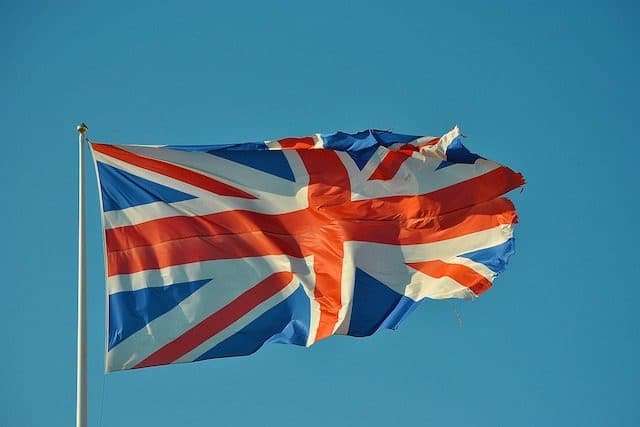
British-American scientific cooperation was widespread during the Second World War, including within the highly classified Manhattan Project, which led to the development of the atomic bomb. In 1943 Britain and America’s separate atomic weapons programs were merged as part of the Quebec Agreement. In 1946 the Americans enacted the McMahon Act, restricting access to American weapons technology. From that point, the UK forged ahead on its own, developing thermonuclear weapons by 1957. But the British lagged behind developing a survivable nuclear deterrent system, which the Americans designed for deployment in nuclear powered submarines, introducing the Polaris system in the late 1950s.
President John F. Kennedy was a major supporter of Polaris, as well as of restoring the special relationship between the United States and the United Kingdom. The success of the early Polaris submarines allowed the United States to cancel the Skybolt missile program, a proposed system in which thermonuclear weapons would be launched from aircraft carrying the Skybolt missile. Early planning had the UK purchasing the Skybolt system, thus bolstering their own deterrent, as well as sharing the research costs of the weapons system. With Skybolt canceled, the Kennedy Administration proposed sharing Polaris with the Royal Navy. The US agreed to sell the British Polaris missiles, along with the launch system, while the UK provided its own warheads and the submarines.
The Polaris Agreement, later amended to include Trident missiles, remains the source of Great Britain’s independent nuclear deterrence program. Since 1966 the Royal Navy has maintained at least one nuclear armed submarine at sea, giving the British government leverage in diplomatic relations as a full-fledged nuclear power. The Polaris Agreement between the United States and Her Majesty’s Government has been the basis of continuing British credibility as a nuclear power for more than fifty years. With amendments to include the Trident II missile and the Dreadnought class submarine it will continue to unite the two powers for decades to come.
8. The British Invasion and Swinging London of 1964 – 66
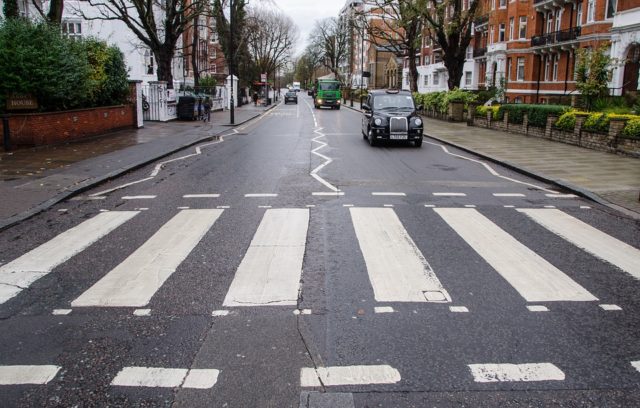
Beginning with the Beatles in the early 1960s, and continuing through films (Alfie, To Sir, With Love), fashion (go-go boots, miniskirts), television (The Avengers, Dr. Who), and international celebrities (Twiggy, Sean Connery, Julie Andrews, David Frost) Great Britain dominated the 1960s entertainment world. Dingy, drab British streets transformed seemingly overnight into Swinging London. Led by The Beatles, British musical acts dominated the airwaves, particularly in the United States, where disposable incomes found their way into British pockets. By the mid-1960s The Beatles alone were earning roughly $650 per second globally.
Those monies, earned in dollars, were converted into British pounds by the Bank of England. The dollars boosted the British economy, saving the pound from devaluation, reducing the national debt. The four Beatles didn’t receive their MBEs from Her Majesty simply because of their popularity. They were at the front of an economic engine which revitalized the British economy as much as it did British morale. And they were part of a general “feel-good” movement which grew in Britain throughout the 1960s. In the first year of the decade national service, the UK equivalent to the US draft, came to an end. Several other changes followed.
In 1967 abortion became legal in Great Britain with the passage of the Abortion Act. That same year birth control became widely available via the National Health Service Act of 1967. Same sex acts between consenting adults (21), previously a criminal offence, became legal in England and Wales in 1967, extended to Scotland in 1980 and to Northern Ireland in 1982. For many conservatives and religious leaders these changes were reflective of the decline of the empire. For others they were indicative of newly found personal freedoms guaranteed and protected by British law.
7. The Aberfan Mining disaster of 1966
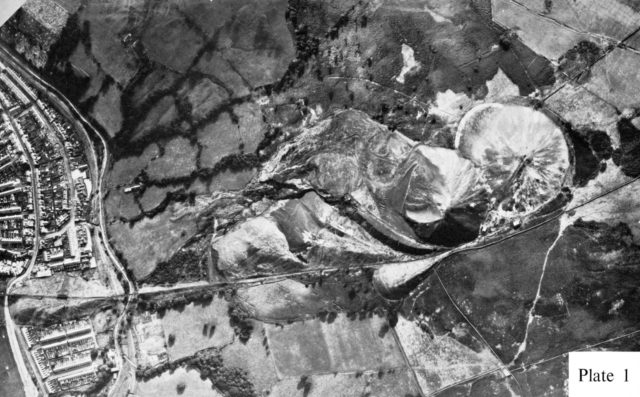
In October 1966 a coal soil tip – a pile of waste material generated through coal mining – illegally constructed and maintained, slid down a Welsh hillside and obliterated part of the town of Aberfan, where it buried a school and several houses. The slide killed 144 people, 116 of them children. The ensuing investigation placed the responsibility for the incident on the National Coal Board, which had been responsible for the creation and maintenance of the tip, along with six others located nearby, all of which were in violation of existing regulations governing their existence. Though the National Coal Board (NCB) was found liable for the disaster, neither the NCB nor any of its officers were ever prosecuted. Nor was anyone else.
In the immediate aftermath of the tragedy Her Majesty Queen Elizabeth steadfastly refused to visit the site, although her husband, Prince Philip, Duke of Edinburgh, did. So did Lord Snowdon, her brother in law, then married to Elizabeth’s sister, Princess Margaret. Her Majesty waited a full eight days before venturing to the scene to meet with her subjects. It was a delay she later came to regret, according to some observers of the Royals and her reign. At the fiftieth anniversary of the tragedy in 2016 she dispatched a personal message noting the occasion and expressing her continuing grief, delivered by her son and heir apparent, Prince Charles.
As of 2022 the Aberfan disaster remains the worst mining disaster in British history, in terms of fatalities. It remains a source of bitterness among the families of the victims as well as survivors, and a source of profound regret for Queen Elizabeth.
6. The Vietnam War

Despite sometimes near relentless pressure from the administration of US President Lyndon Johnson and his emissaries, the United Kingdom did not actively support American military intervention in Vietnam. But Great Britain did not escape the Vietnam War. As the 1960s wore on, Queen Elizabeth observed anti-war protests among her subjects and in her dominions. As in the United States, the realms of Queen Elizabeth divided over American involvement in Vietnam, often bitterly. American – British relations were strained. British attempts to broker a peace met with American hostility, especially during the Johnson Presidency.
Australia did send troops to Vietnam, in what remains the longest military intervention in Australian history. So did New Zealand. Those actions, which generated further controversy, ensured the war and American intervention in Vietnam remained a source of protests. There were often violent anti-war demonstrations throughout Elizabeth’s sphere of influence during the 1960s and 1970s.
During Prime Minister Harold Wilson’s tenure over the British government in the 1960s, he described Britain’s position toward America’s Vietnam policies as one of “negative support”, a bit of political doublespeak of which Orwell would have been proud. British opposition to the Vietnam War, and the alliance of British anti-war protestors with those of America and other western nations were a major focus for Her Majesty’s government during the 1960s and 1970s. Britain was not actively involved in the war, but found itself divided over America’s involvement, another strain on the US – UK “special relationship”.
5. The IRA bombing campaigns
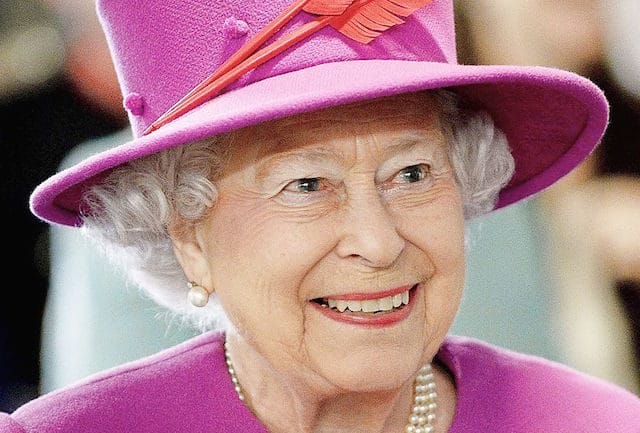
Centuries of bombings, assassinations, military and police anti-terror campaigns, riots, civil war, and a slew of violence over Ireland known collectively as “The Troubles”, haunted Queen Elizabeth throughout her reign into the 1980s. During the late 1960s the British Army in Northern Ireland struggled to establish a peace with the radical factions of the Irish Republican Army (IRA) and other terrorist groups. Violence in Northern Irish cities, involving British troops and Irish “revolutionaries”, made cities such as Belfast as dangerous as any in the world. Terror bombings occurred in London and other British cities as well.
In 1979 the IRA conducted a series of high-visibility assassinations, murders of senior officials which were notable for their brutality and audacity. One near victim of the bombing campaign was US General Alexander Haig, former US Secretary of State and then Commander of NATO. In August, 1979, IRA bombs ripped apart a yacht killing Lord Mountbatten, an uncle of Elizabeth’s husband Prince Philip, and several members of his family. Mountbatten had been the last Viceroy of India, and was a distant cousin of the Queen. To many observers, the IRA’s indiscriminate killing was as brutal as that practiced by Islamic terrorists of later years.
British conservative governments responded with anti-terrorist tactics while political factions attempted to work out agreements satisfactory to all parties. Problems with the government of Northern Ireland have been a consistent feature of life for more than sixty years. Though progress was made, splinter terrorist factions continued to create waves of violence. In 2007, British Army troops left Northern Ireland, having been there for more than three decades, and having suffered over 1,400 dead during their lengthy deployment. “The Troubles” continue to be a black spot on the long reign of Elizabeth II.
4. Return of Hong Kong and visit to China
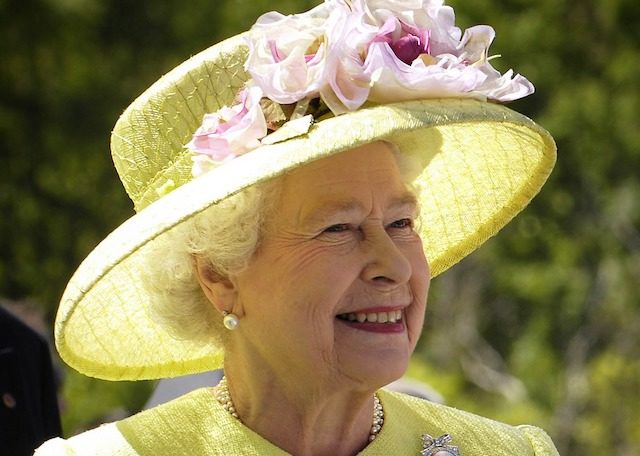
With the exception of the period of Japanese occupation during World War II (1941-45), Hong Kong was a British colony from 1841. Britain obtained the territory by right of conquest during the Opium Wars, and expanded its boundaries and possessions through the remainder of the 19th, and during the early 20th centuries. When the communist People’s Republic of China (PRC) gained a seat on the United Nations’ Security Council it began a campaign to reacquire the territory, as well as the Portuguese held territory of Macao. By the 1970s the PRC officially recognized the British administration of Hong Kong, but denied its sovereignty over the territory.
As Britain entered into extended negotiations to return Hong Kong to Chinese sovereignty controversies arose, exacerbated by perceived saber rattling on the part of the PRC. Finally, after years of diplomatic give and take, including the first visit by a sitting British Prime Minister (Margaret Thatcher) to Hong Kong, the British agreed to return sovereignty over the territory to China in 1984. Queen Elizabeth visited the city in 1986 (her second trip to Hong Kong, the first occurring in 1975). The formal handover of the territory took place as agreed on July 1, 1997. Prince Charles represented the monarchy at the formal handover.
When Elizabeth ascended to the throne in 1952 the dissolution of the British Empire had already been underway for some time. The handover of Hong Kong marked, for many, the end of the British Empire. In 2002 Parliament established the term British Overseas Territory to describe the 14 remaining territories still under the control of the Crown.
3. 1992 and the year of scandals for the Royal Family
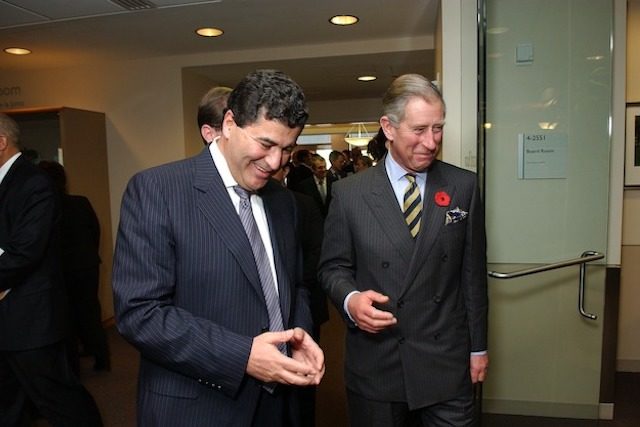
Throughout her long life, before and during her reign as Queen, Elizabeth has remained free of personal scandal and even controversy. Her life has been dedicated to service, beginning as a young Princess during the Second World War. Unfortunately for Her Majesty, the same cannot be said of her family. Elizabeth’s sister Margaret was involved in several sex scandals, a public and embarrassing divorce, and a publicly scrutinized private life which provided tabloid fodder on both sides of the Atlantic. Elizabeth’s son Andrew’s public behavior led to him being dubbed “Randy Andy” by the British press, decades before his association with Jeffery Epstein and accusations of child abuse. Eventually he was removed from his duties as a royal due to his deteriorating reputation.
But it was the troubled relationship between her son Prince Charles, his wife Princess Diana, and the intruders into their marriage which led Her Majesty to dub 1992 as Annus Horribilis, “…not a year on which I shall look back with undiluted pleasure”. That year her daughter Anne was divorced from her husband, Captain Mark Phillips, following a tabloid-fueled scandal in which both parties were linked to outsiders. The Duchess of York, the former Sarah Ferguson, and her husband, the aforementioned Randy Andy, produced numerous salacious stories for the press, complete with photographs, leading to their separation and eventual divorce. Then there was the separation of Diana and Charles, punctuated with the publication of conversations between the Princess of Wales and James Gilbey.
The following year another tape, containing intimate and embarrassing conversations between Prince Charles and Camilla Parker Bowles provided additional gasps and tsks over the royals’ behavior. While most of the world found the behavior of the Windsor’s reprehensible, Her Majesty maintained the legendary British “stiff upper lip” and weathered the storm. Further scandals have since emerged, though Elizabeth continued to rise above them.
2. Death of Princess Diana
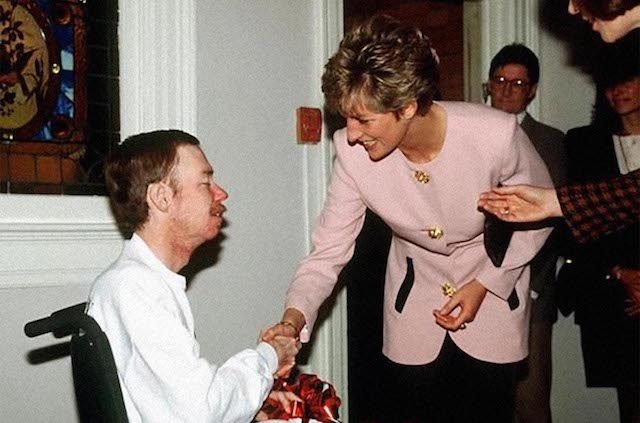
The death of Princess Diana brought about an international outpouring of shock and grief. The former wife of one heir to the British throne, and mother of another, was elevated to near saintly status in the world’s press and media. Thousands flocked to Buckingham Palace to lay tributes in the form of flowers, cards and letters, banners and posters, and vigils. Celebrities gave tribute around the clock. Yet criticism of the Queen and the Royal Family was prevalent. Among the complaints was the absence of the Royal Standard at half-mast above the palace. The Queen was at the time not in residence at the palace, and the Royal Standard flew at Balmoral, her then-residence, as prevailing protocol demanded.
The mourning period and funeral reintroduced the events which led to Diana’s divorce from Charles, as well as presented her as a model mother to Princes William and Harry. At the same time the Queen and the Royal Family drew considerable criticism for their treatment of Diana while she had been alive, as well as their perceived indifference over her tragic death. Perhaps inevitably, conspiracy theories arose, some linking British intelligence, French intelligence, and even Prince Philip, Duke of Edinburgh and husband to the Queen, to Diana’s death. Many remain a subject of debate to this day.
Diana continued to be lionized decades after she died as the result of an automobile accident in which her driver was intoxicated to a level over three times the legal limit in France. Her tragic death rocked the monarchy, though as time passed Elizabeth, at first heavily criticized, rose in the estimation of most of her subjects.
1. Marriage of Prince Harry and Meghan Markle

Throughout her long reign Elizabeth has maintained a difficult relationship with the British press, including numerous lawsuits instigated by Her Majesty and her family. The press has responded with critical, sometimes salacious coverage of the Royals, both of their professional handling of their duties and their personal lives. Advancing age caused the Queen to gradually reduce her public appearances, especially after the death of her husband, Prince Philip, in 2021. Throughout her reign, public approval of the monarchy as an institution has waxed and waned, though personal approval of the Queen has remained high. In 2012, the year of her Diamond Jubilee, it reached 90%.
In 2017 Prince Harry, the younger son of Prince Charles and Princess Diana, announced his engagement to Meghan Markle, a biracial divorcee who also happened to be a (gasp) American. Elizabeth’s uncle had decades before abdicated the throne in order to marry a divorced American woman, and though the possibility of Harry ever ascending to the throne was remote, it nonetheless demonstrated how public attitudes had changed throughout Elizabeth’s reign. Public acceptance of Meghan was almost universal. Later events proved within the private rooms of the Royal Family she was not so readily welcome. Prince Philip advised his grandson against marrying his betrothed. Meghan and Harry eventually renounced their Royal duties and relocated to America, and their subsequent appearances with the Royal Family indicate an ongoing rift among the Windsors. Yet Her Majesty appeared above the fray.
“Apres moi, les deluge”, Louis XV of France is said to have commented, meaning “After me the flood”. The quote is said to express indifference to events once one is dead and gone. It cannot be said to apply to Queen Elizabeth II. Despite the shenanigans of some members of her family, and arguments for the elimination of the monarchy which arise from time to time in British society, Her Majesty has for over seven decades served her people with patience, fortitude, and regal dignity. The public generally recognizes and respects her dedication. Regardless of who or what inevitably replaces her as Britain’s head of state, she will prove to be a tough act to follow.